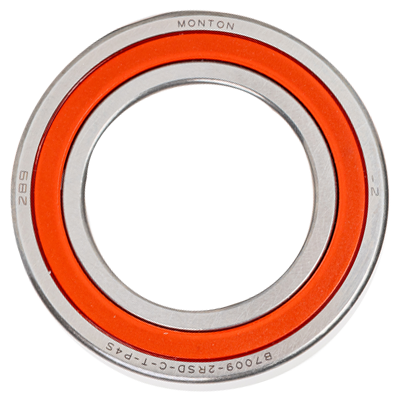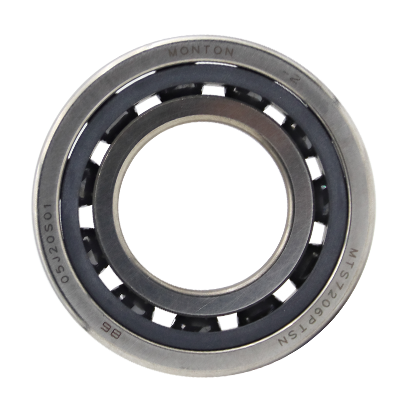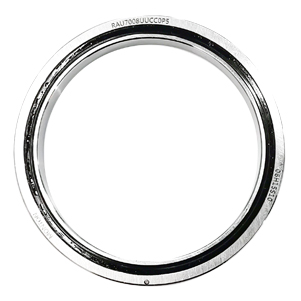The Joint Code of Humanoid Robots: Analysis and Future Prospects of Bearing Technology
In science fiction movies, humanoid robots are always able to complete complex tasks with nimble movements. When the camera zooms in on their mechanical joints, a seemingly ordinary but crucial component - bearings - quietly determine the precision and reliability of the robot's movements. As the "joint code" of mechanical transmission, bearings are not only the transmitters of force and motion, but also the core carrier for humans to break through the bottleneck of bionic technology.
1、 Bearings: the lifeline of humanoid robot motion
Humanoid robots need to simulate the coordinated motion of 206 human bones, and their joint systems must have the characteristics of high precision, high load, and fast response. According to statistics, a humanoid robot needs to be equipped with 20-40 rotating actuators, each of which often contains 2-3 sets of precision bearings inside. These bearings not only have to withstand impact loads of up to hundreds of Newton meters during walking, but also achieve micrometer level position control when grabbing eggs. Their performance directly determines the dynamic balance ability and motion delicacy of the robot.
2、 Technical diagram of bearing types
In the field of humanoid robots, the selection of bearing types is like tailoring motion kits for different joints:
deep groove ball bearing
As the most basic "jack of all trades" player, deep groove ball bearings are often used in shoulder joint drive motors due to their low friction and high-speed characteristics. At the moment when the robot waves its hand, these bearings silently support the smooth swing of the robotic arm at a speed of 3000 revolutions per second.
angular contact ball bearing
Every bend of the knee joint hides a mystery. Angular contact ball bearings form a "pressure combination" through paired installation, which can withstand the axial impact of body weight during walking and also resolve the radial load caused by lateral torsion. The Tesla Optimus robot utilizes this type of bearing to achieve dynamic balance during stair climbing.
Cross roller bearings
This type of bearing can be called the "all powerful warrior" in the field of precision transmission. The special structure of its internal rollers arranged in a 90 degree cross pattern is like installing multi-dimensional shock absorbers for joints. When the Boston Dynamics Atlas robot completes a backflip, the cross roller bearings in the waist rotation joint are controlling the torque distribution with an accuracy of 0.001 degrees, ensuring absolute stability of the backflip axis.
Special bearings for harmonic reducers
In the tiny space of robot finger joints, the special bearings for harmonic reducers demonstrate astonishing technological charm. Its cross cylindrical roller structure, as thin as a cicada's wing, can bear loads 10 times its own weight and achieve zero backlash transmission. When the robot performs simulated operations with a surgical knife, the accuracy of these bearings directly determines the stability of the "knife holder".
3、 Technological Breakthrough and Industrial Competition
The Chinese bearing industry is staging a wonderful drama of "breakthrough and counter overtaking":
The flexible bearings developed by Hongyuan Bearing have broken through the Japanese technology blockade and won 90% of the domestic market share in harmonic reducers. Their product life has been increased from 2000 hours to 8000 hours, and their precision retention has reached the international advanced level.
The cross roller bearing samples provided by Su Zhu Co., Ltd. for Tesla's humanoid robots have increased the material fatigue strength by 30% through a unique vacuum heat treatment process, and the equivalent walking distance that each bearing can withstand has jumped from 500 kilometers to 1500 kilometers.
But this competition is far from over. The latest nano coating bearing released by THK Corporation in Japan has reduced the friction coefficient to 0.0008 and is redefining the industry standard for precision transmission with surface waviness treatment technology that is smaller than the diameter of a human hair.
4、 Future evolutionary direction
With the evolution of humanoid robots towards emotional interaction and autonomous decision-making, bearing technology is undergoing fundamental changes:
Intelligent bearings
The "thoughtful bearings" integrated with microsensors have entered the laboratory stage. This type of bearing can monitor temperature, vibration, and load changes in real time. When abnormal stress is detected, it can autonomously adjust the preload to prevent damage to the mechanism.
Biomimetic bearings
A self-lubricating bearing inspired by human synovial joints, using biomimetic materials resembling cartilage, achieves millions of motion cycles without the need for external lubrication. The bionic robot arm developed by Festo, a German company, has a wrist joint bearing with a friction coefficient close to that of real human joints.
Standing at the critical point of technological innovation, bearings have surpassed the scope of traditional mechanical parts and become an interdisciplinary carrier that integrates materials science, intelligent sensing, and biomimetic biology. When humanoid robots finally break through the "uncanny valley effect" and assist the elderly in nursing homes or build cities on Mars bases, the precision bearings that silently operate deep in the joints are the technological cornerstone that humans give machines the "temperature of life". This pursuit of precision and reliability will ultimately unleash a dynamic beauty beyond human imagination in the mechanical body.
Previous: Monton bearing official homepage
Next: MONTON Bearing participates in the 2025 Metalloobrabotka Machine Tool Exhibition in Russia


 English
English Russian
Russian Chinese
Chinese









